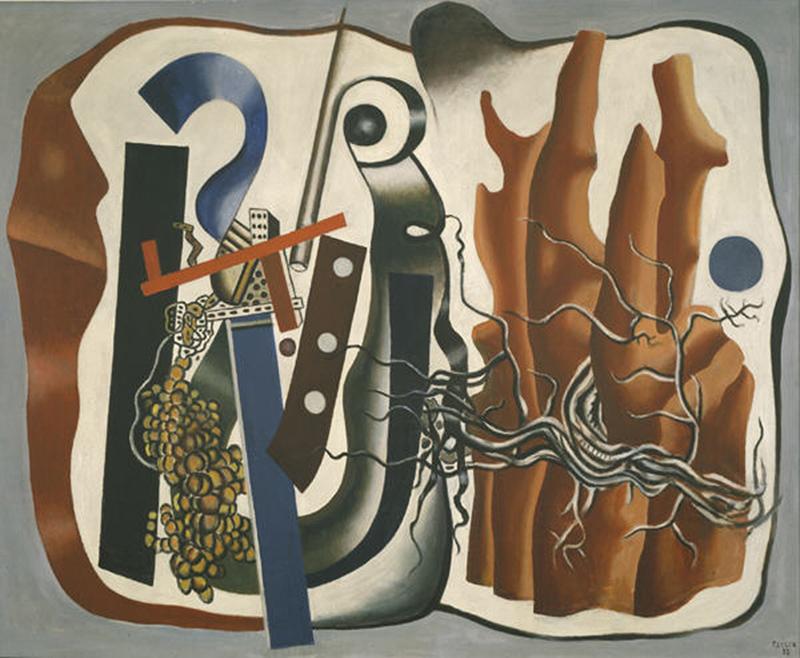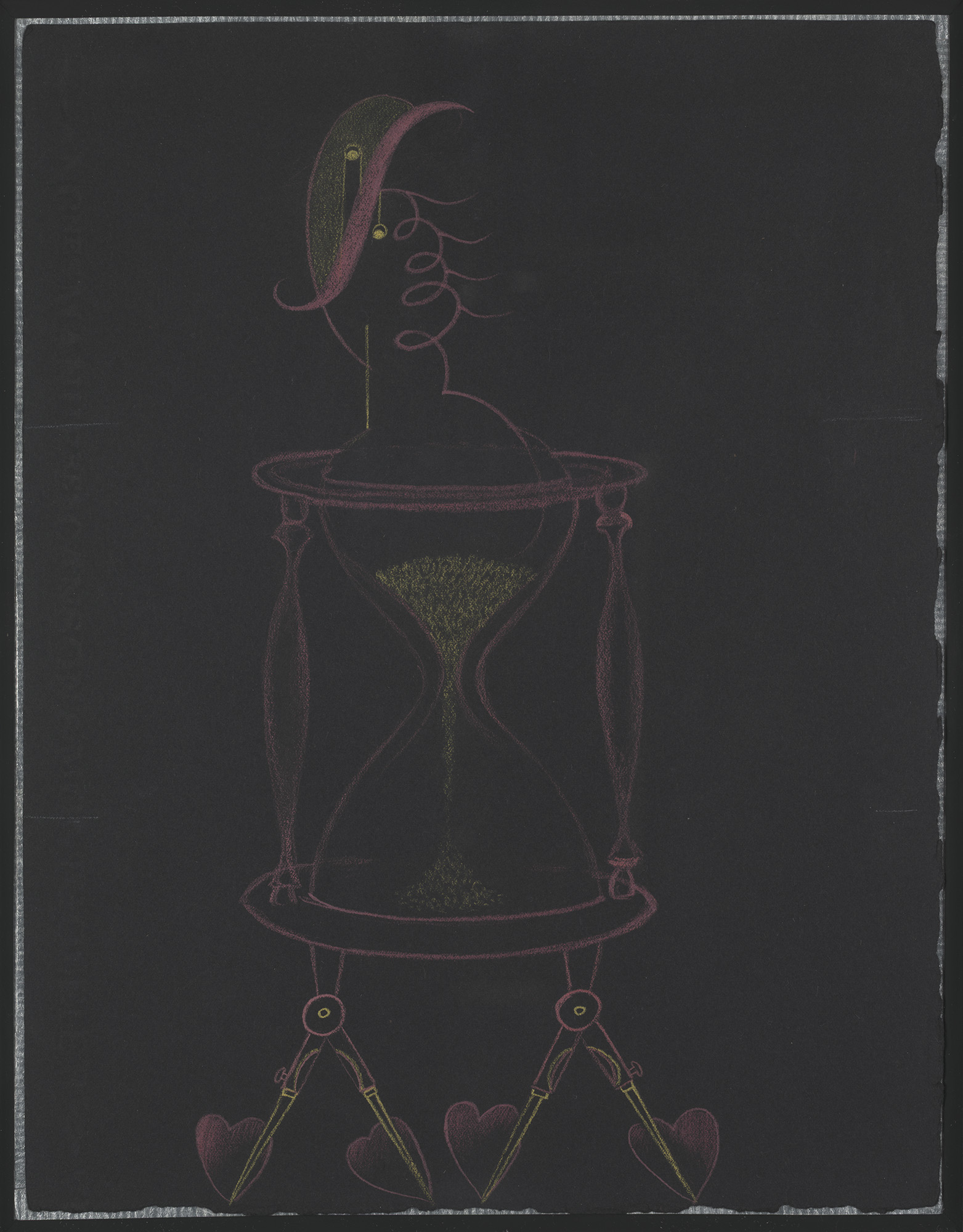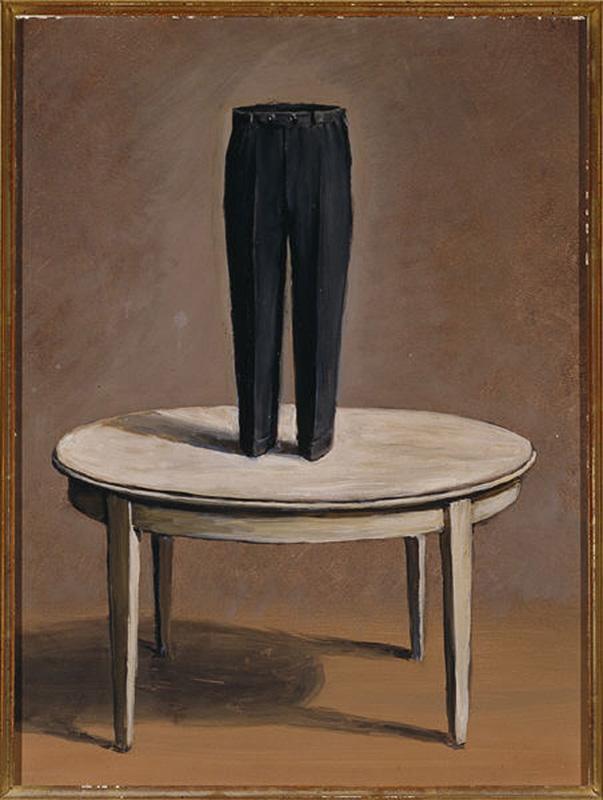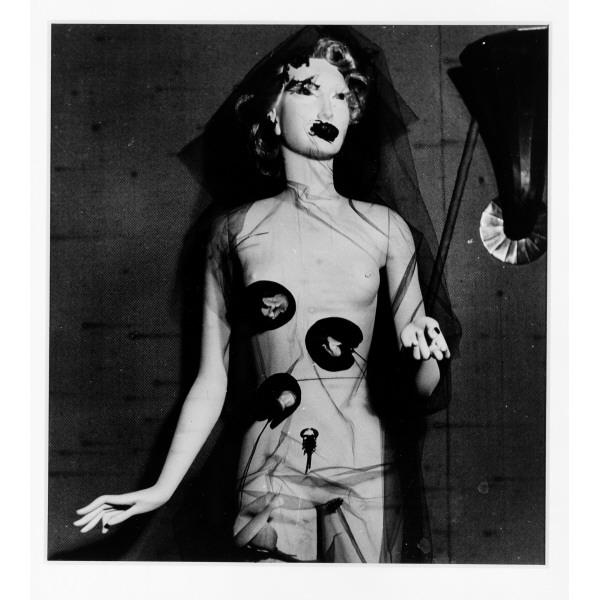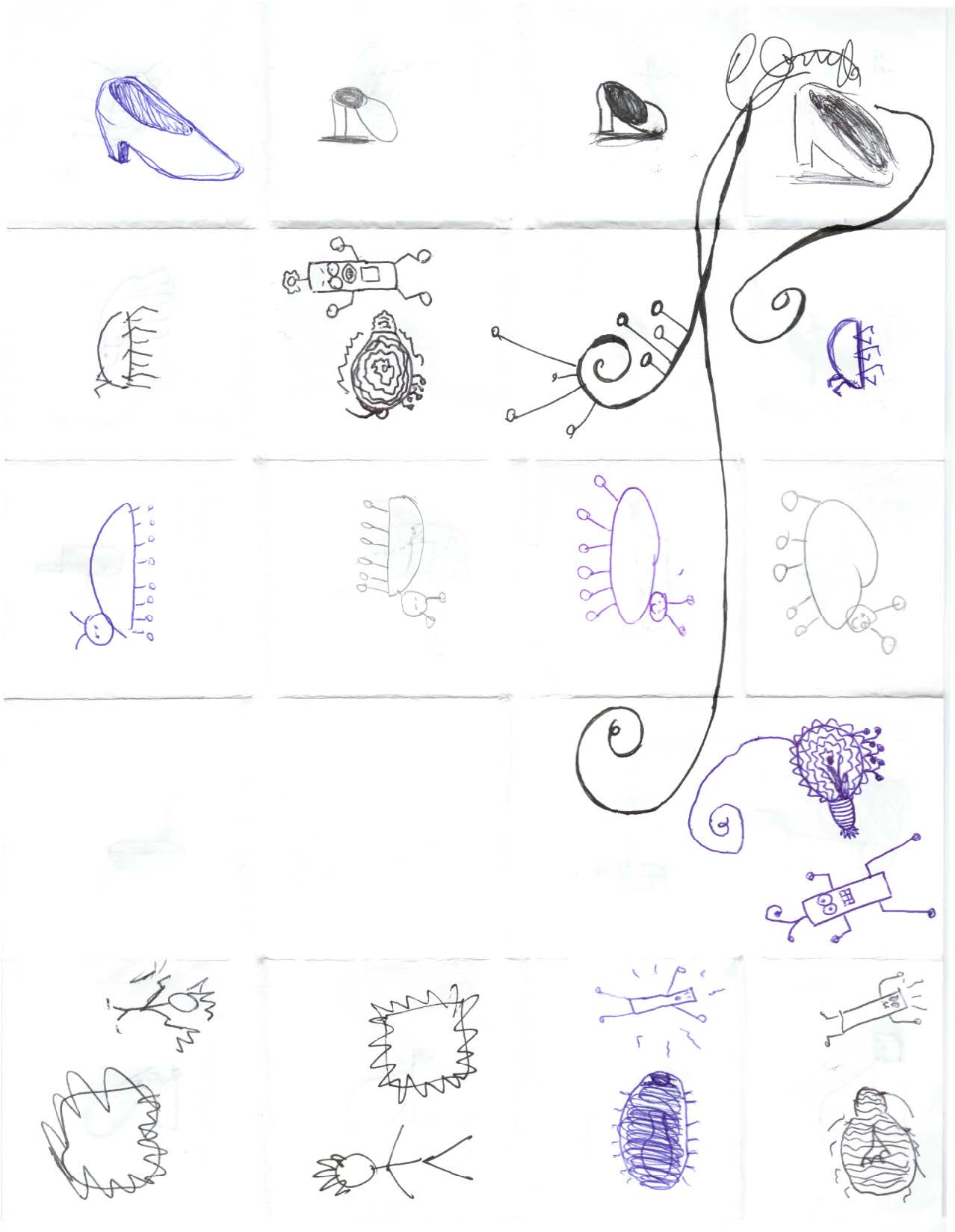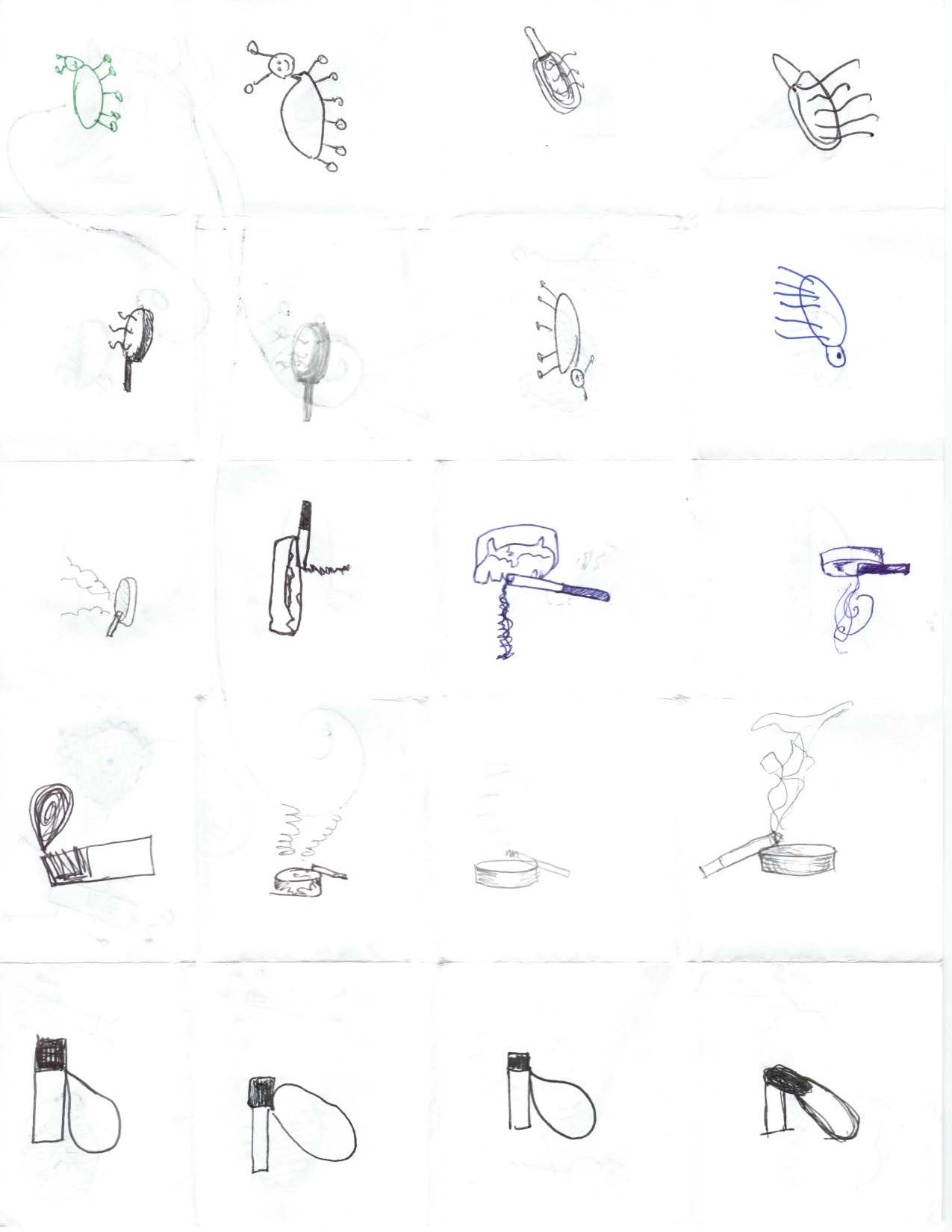Surrealism has had a major impact on both the art world and popular visual culture. Its influences are evident in Pop art, Abstract Expressionism, and time-based media installations, and in contemporary film, music, and advertising. In Dior: From Paris to the World, you can see Surrealism’s influence as a continuing inspiration in haute couture fashion.
Maria Grazia Chiuri explored Surrealist symbolism in her Spring–Summer 2018 show, where monochromatic black and white dresses were offset by a black-and-white chessboard runway “in a not-so-subtle nod to the world of games,” according to Dior, “conjuring an otherworldliness and constant optical illusion.”
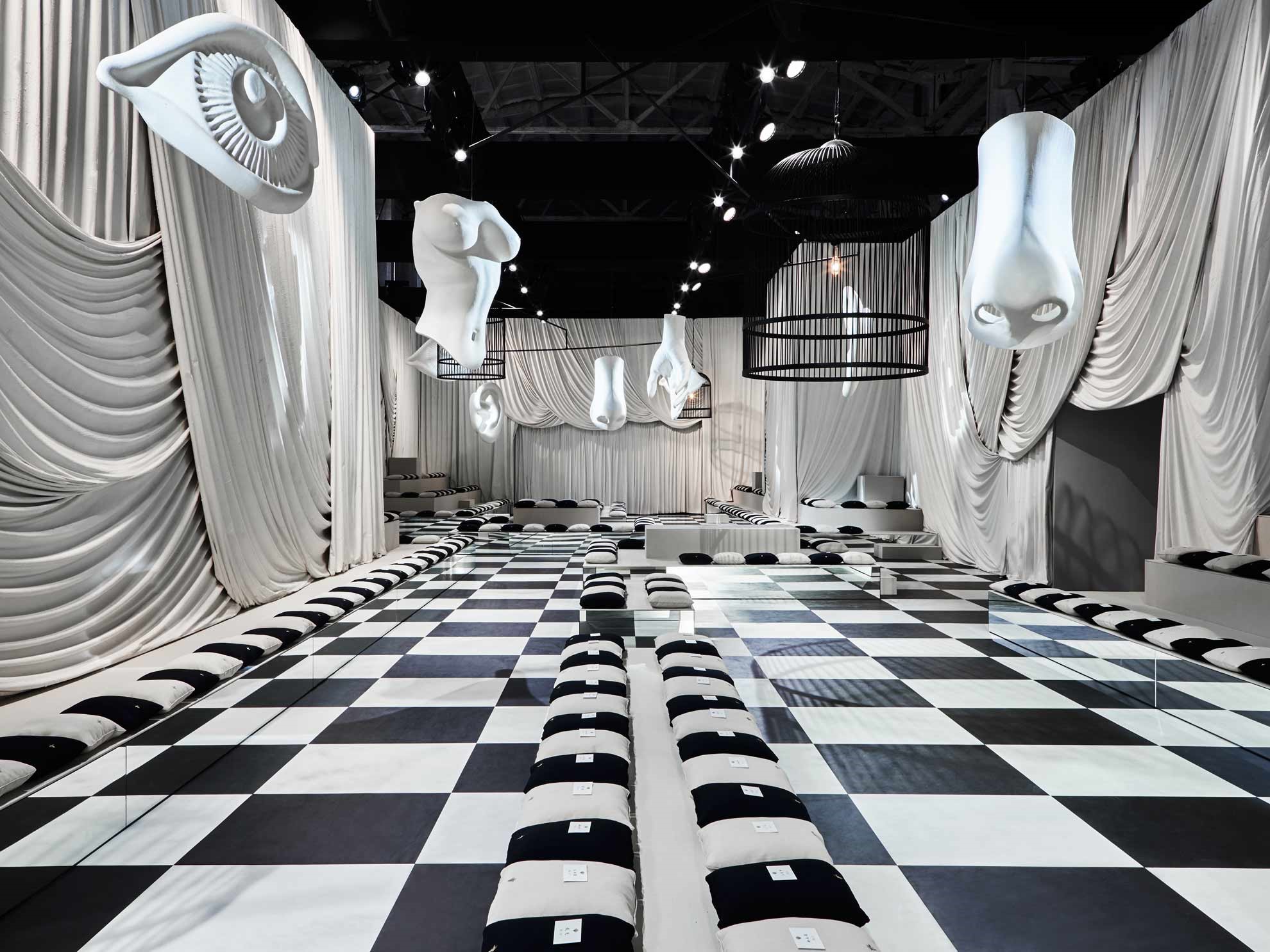
Chiuri explored Surrealism in her collection with a focus on American photographer Man Ray and female Surrealists Leonora Carrington and Leonor Fini. It’s no coincidence that she found inspiration in Fini, as Christian Dior, an art gallerist turned couturier, organized Fini’s first solo exhibition in November 1932.
Fini, a young and audacious artist, was a celebrity in her time, in part thanks to Dior. She often wore his designs—although in a memorable 1936 episode she attended a party wearing only “knee-length white leatherette boots and a cape of white feathers.”
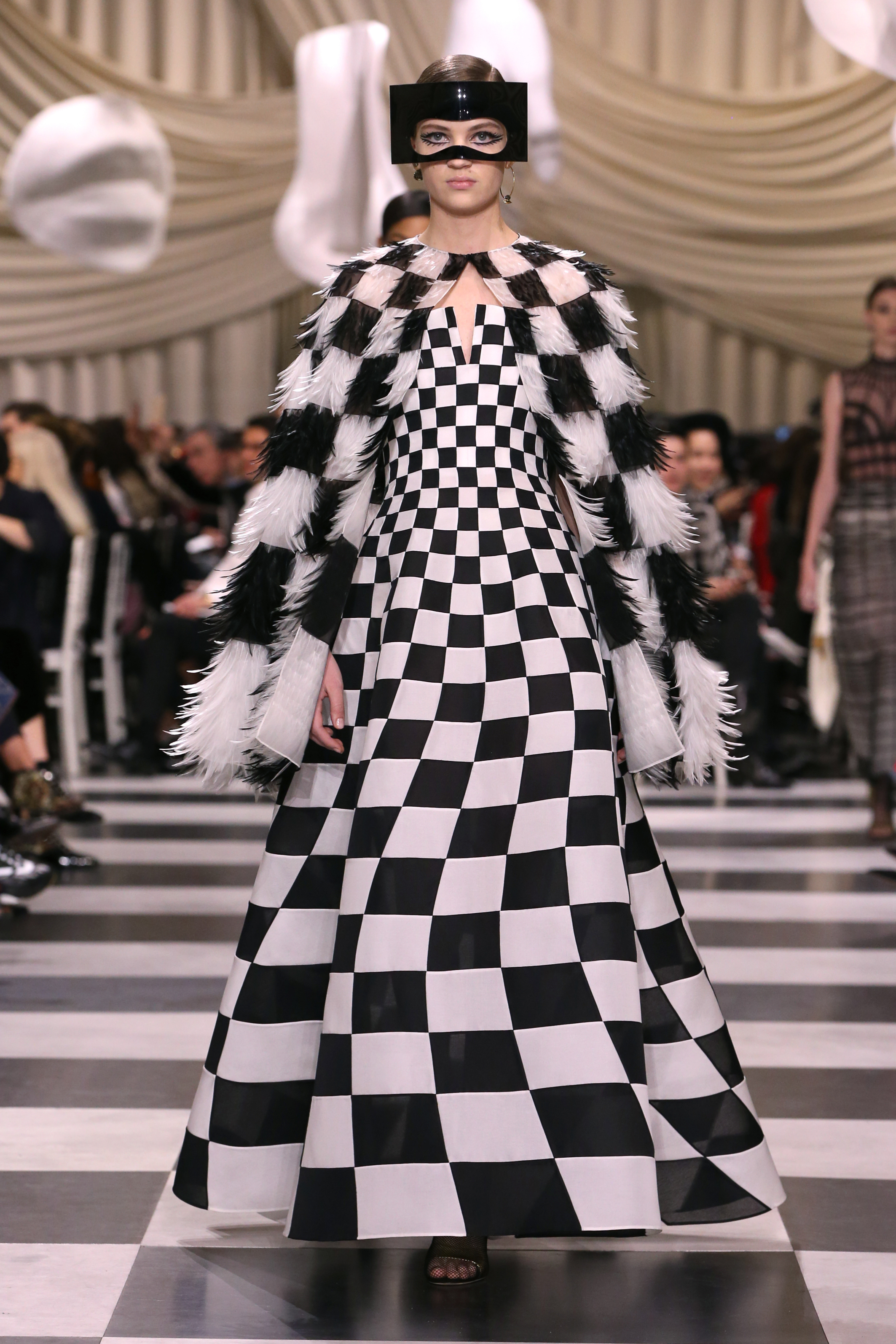
Alchimiste, a checkerboard ensemble that includes a long dress made of organza inserts with a feather-embroidered short cape (Look 5, Maria Grazia Chiuri: The New Feminity), reimagines a representation of Fini’s famous party ensemble against the Surrealist chessboard.
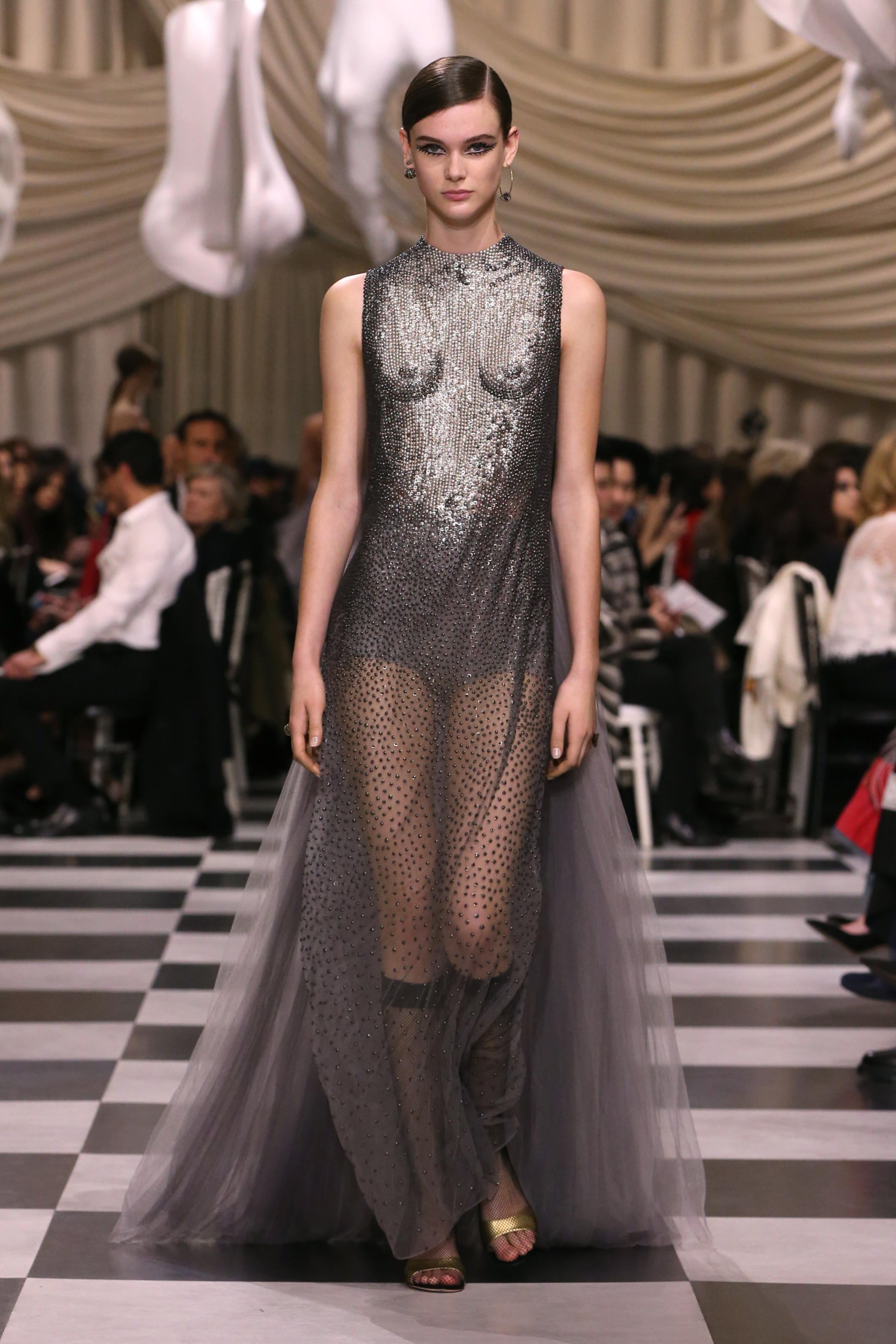
More literally, Chiuri’s dress Nude (Look 8, Maria Grazia Chiuri: The New Feminity), with its trompe l’oeil dress embroidered with metallic sequins, is a literal interpretation of Man Ray’s 1929 Nude. A copy of Man Ray’s work can be found on Chiuri’s mood board.
In a way, the dress also pays homage to René Magritte’s The Light of Coincidences, on view in the DMA’s European Galleries on Level 2. In creating Chiuri’s Nude, hand-embroidered silver metal sequins were specially placed so the results mimicked light reflecting on the body, similar to the candlelight against Magritte’s sculptural torso.
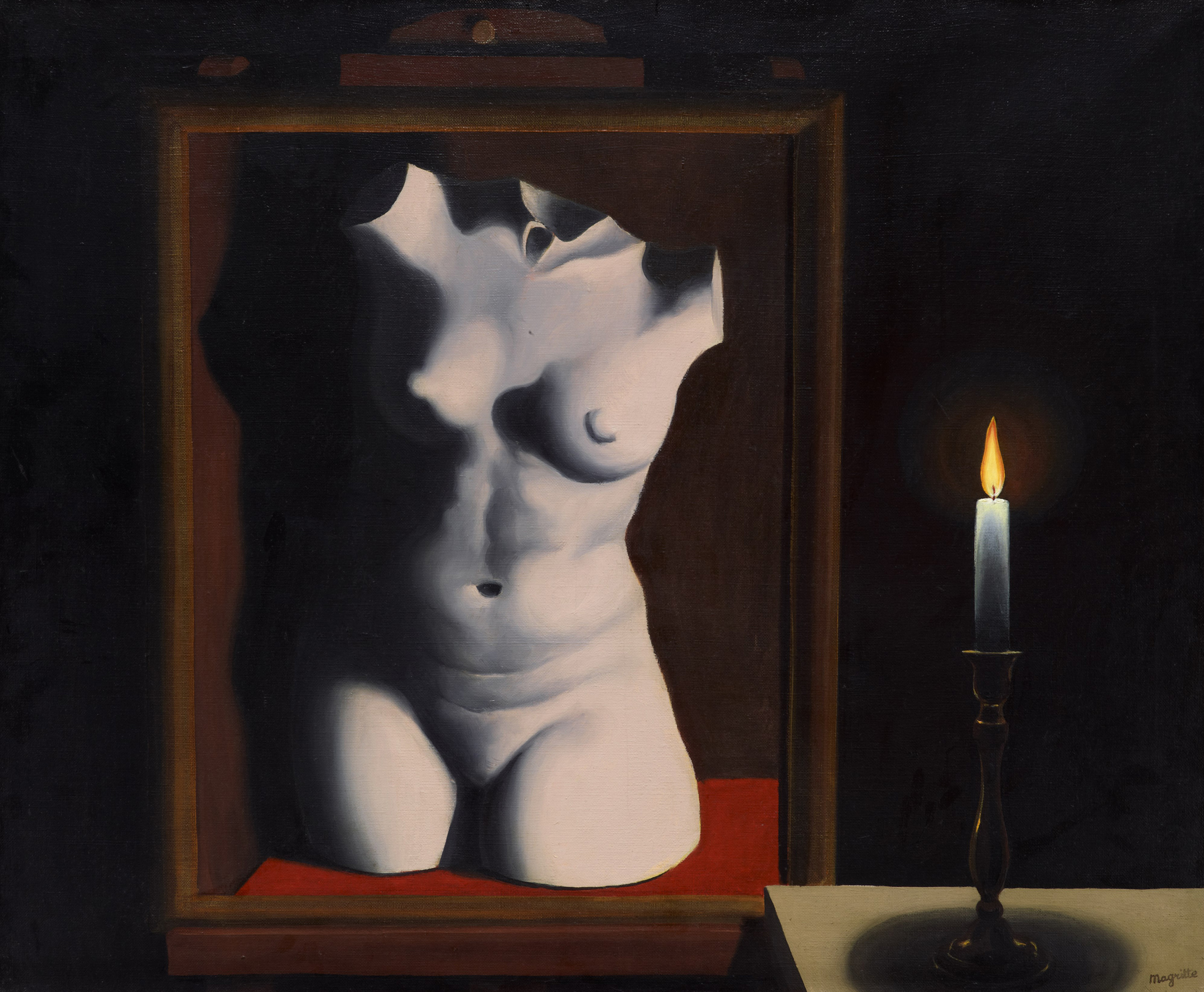
Dior also debuted Salvador Dalí’s masterpiece The Persistence of Memory as part of a larger solo exhibition in 1931. The painting famously depicts Dalí’s melting clocks, which Dior presented when he worked at the Galérie Bonjean. Chiuri also displays Dalí’s 1944 Vogue cover on her mood board in the exhibition.

The Verve’s “Bittersweet Symphony” played over the last looks in the runway show—New York’s Newsday described the band as having “blurring effects [that] stretch and contract the music into the liquid surrealism of a Salvador Dalí painting.” Their 1992 Gravity Grave EP cover nods to The Persistence of Memory.
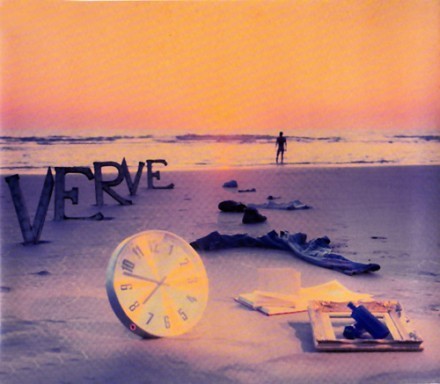
However, it was most likely Fini that Chiuri was channeling when she chose The Verve, using graphic masks to note literally Fini’s passion for grand balls, which allowed her to impersonate different characters. An extraordinary ball held at Venice’s Palazzo Labia on September 3, 1951, organized by Charles de Beistegui, would go down in posterity as “The Ball of the Century” and an unforgettable fusion of the arts. Dior, Fini, and Dalí were among the 1,500 guests.
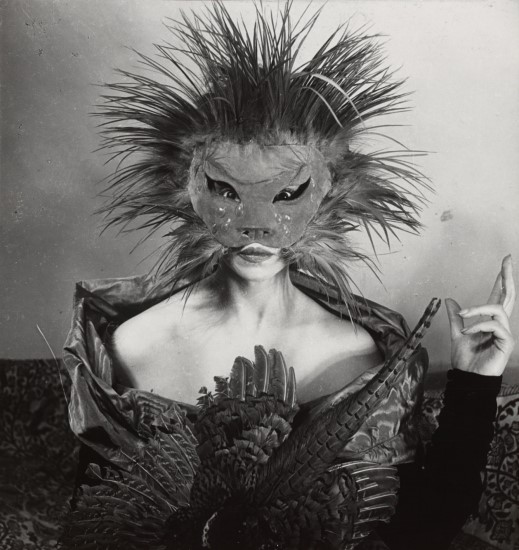
And what is a ball without a mask? Is fashion not a daily mask we can use like a Surrealist to explore playing with reality?
As The Verve sang over Chiuri’s runway: “I’m a million different people from one day to the next, I can’t change my mold no, no, no, no.”
—
Explore these Surrealist connections and more in Dior: From Paris to the World through September 1. Visitors must purchase timed tickets in advance at DMA.org/Dior.
Clara Cobb is the Senior Marketing Manager at the DMA.
